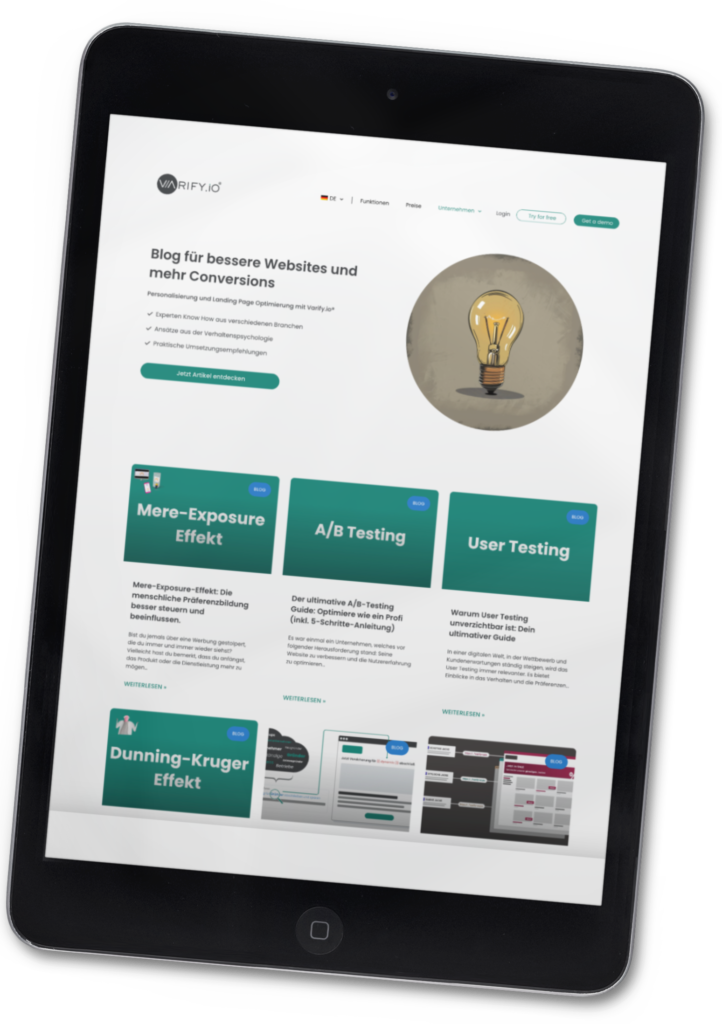In the dynamic world of digital marketing, continuous optimization is a must. One way to achieve this is by conducting split tests. In this article we will look at the definition, benefits, types and some best practices for split testing.
Table of contents
What is a split test?
A split test, also known as A/B test, is an experimental method that helps marketers better understand the behavior of their target audience and optimize their marketing efforts. At its core, it involves testing two or more versions of a website or digital marketing element against each other to see which is most effective.
The importance of split testing
Split tests are important in the digital marketing world. They enable marketers:
- Make data-driven decisions: Rather than relying on guesswork, split testing provides concrete data about which elements work and which don't.
- Improve the user experience: By testing different layouts, colors, and texts, marketers can find out what their users like best and make adjustments accordingly.
- Increase conversion rates: Optimizing different elements of a website or an advertising campaign can improve conversion rates.
Split test types
There are different types of split tests that can be used depending on your needs:
1. A/B tests: This tests two versions of a web page or advertising element against each other. For example, a red button could be tested against a green one to see which one generates more clicks.
2. multivariate testsThese are a bit more complex and test different combinations of elements on a web page. They are useful when testing multiple changes at the same time.
It is important to note that the choice of test type depends on the specific situation and the company's goals.
Best practices for split testing
A good start for successful split testing is to set clear goals. It's important to know exactly what you want to achieve with your test. Is the goal to increase the conversion rate? Do you want to improve the average time spent on your website? Or do you want to find out which newsletter subject leads to the highest open rates? A clearly defined goal allows you to plan your test better and evaluate the results more effectively.
Another important point when running split tests is to change only one element per test. For example, if you change the color and positioning of a call-to-action button at the same time, you won't know at the end of the test which change resulted in improved (or worsened) performance. So focus on one change at a time to gain accurate insights.
It is also recommended to perform the test with a sufficiently large sample. If you run your test on only a small group of users, the results might be skewed. So try to run your test on a representative group of users to get more reliable data.
Last but not least, patience is critical when split testing. It can be tempting to stop testing as soon as you see apparent results, but it's important to run the test long enough to get reliable data. Even if it takes longer than expected, patience will pay off by giving you accurate and valuable insights.
Examples for the application of split tests
Split testing can be applied in almost all aspects of digital marketing. Here are some typical examples:
- Test headings: The heading is often the first thing a user sees on a page. Test different headings to see which one is most appealing.
- Calls to action (call-to-action): A CTA is critical to conversion rates. Different wording, colors or positioning can be tested to increase effectiveness.
- Images: Test different types of images to see which ones appeal most to users and make them stay on the page longer or take an action.
Conclusion and findings
In today's competitive digital marketing environment, split tests are an indispensable tool. They enable brands to better serve their customers by optimizing their websites and marketing materials based on actual user data, not assumptions.
Although split testing requires some effort and time, the potential benefits - higher conversion rates, improved user experience, and ultimately more revenue - are worth the investment. By continuously conducting split tests and adapting to the results, companies can succeed in the digital space.
